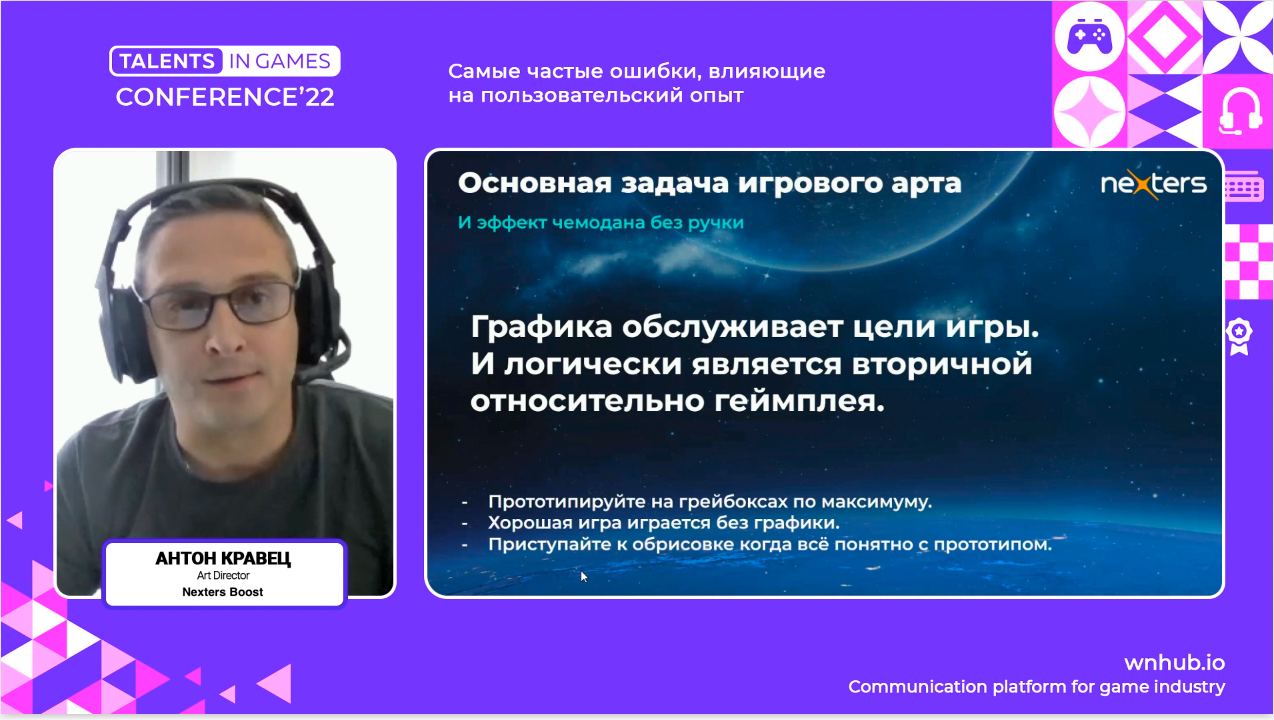Anton Kravets, Art director of Nexters Boost, spoke at the Talents In Games Conference about how to treat game development, why graphics are secondary to gameplay and what a developer who devotes too much time to art from the very beginning of development may face.
Art for Hero Wars, a key Nexters project
Anton began his speech by saying that many developers who are looking for a publisher or investor are united by an uncritical attitude to their own product.
They believe that they have made a great game and they only need promotion to succeed. Therefore, as a rule, they come to potential partners with a request exclusively “about marketing“.
“They can be understood,” Kravets believes. After all, most of the small young teams work conscientiously, they are confident in their project. But this does not negate the fact that their product often has flaws in some aspects.
One of these flaws may be the wrong attitude to the game.
Any game is a work that combines content (game design) and form (visual component). Both the first and the second can be attributed to art. However, games are not pure art, it is also a business, so the form with the content should be commercially oriented.
Therefore, it is impossible to consider the product separately, marketing separately. Game design and art should have aspects that work not only for the entertainment of the player, but also for his attraction and retention.
And here it is important to be able to prioritize, because another common mistake is focusing on the game’s graphics when developing.
“The graphics are secondary to the gameplay. It serves the goals of the game,” Kravets insists.
Almost any game with good gameplay is perfectly played without graphics,” the art director shares. Therefore, during prototyping and the first stages of production, work should go exclusively with the use of gray boxes.
If you do not follow this advice, then there are great risks that:
- at the final stages, the team will refuse to redraw all the graphic legacy under a single style under the pretext of “And so it works“;
- artists will not understand what and how to draw, because game designers will be in constant search at the prototyping stage;
- accordingly, the work of artists will often go to the trash after changes in design, and the budget will grow rapidly.
So everything that can change in the project should not be drawn “for the final“. Moreover, even concepts have to solve specific tasks. Otherwise, it risks turning into wasted time and effort.
The third popular mistake that developers make is the presence of a contradiction between form and content (ludonarrative dissonance). This is not only found in console action games, where good guys, according to the plot, kill thousands of opponents. Dissonance is also common in casual games.
As an example, Anton cites a game in which the main character — an archaeologist girl – is looking for a missing father according to the script. However, the gameplay is not dedicated to finding a parent or keys that can lead to it, but to building an ancient city.
Such games can captivate with their mechanics, but the user will never trust them. This can affect both retention and overall audience loyalty to the project. It is important for the player to understand (if there is a narrative) why he is doing this specifically, and not something else.



